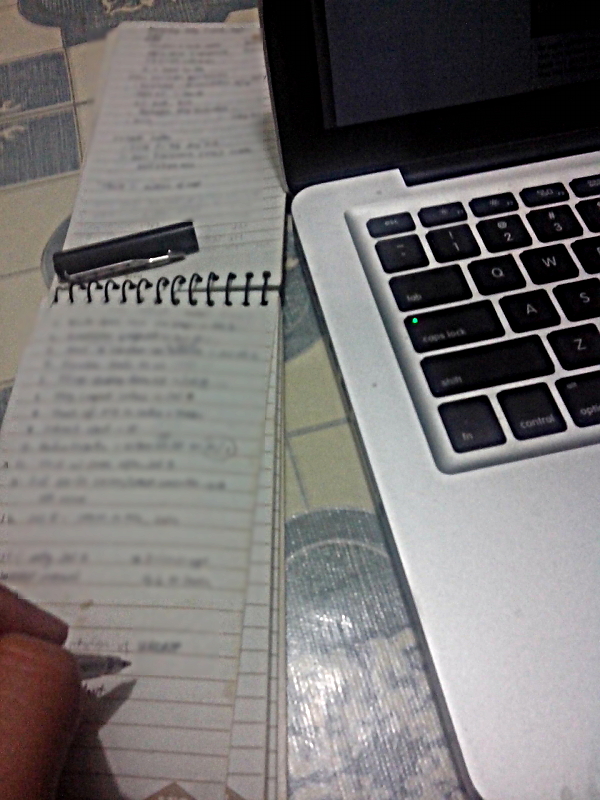
I’ve been trying to step successively into the shoes, first of Tacloban mayor Alfred Romualdez, and next of DILG Secretary Mar Roxas, without any prejudices whatsoever, and just try to understand what their problem was, really. I mean, there was a national emergency raging outside that room, everyone was waiting for their marching orders, and here were two presumably intelligent government officials trying to set the terms of reference in responding to the post-Yolanda emergency. It took them at least 45 minutes to try to agree on their TOR, and they finished not reaching any crucial agreement. What WAS their problem?
No, I won’t try to answer that question, at least not directly. I’ll simply tell a story of how several real grassroots-based non-government organizations (not the Napoles fly-by-night kind) would have held a meeting in response to a similar emergency situation. And mind you, this isn’t just a hypothetical story, because something similar happened to us during the 1990 Northern Luzon earthquake, and it’s probably still the experience of many other grassroots NGOs until now.
So here’s the scenario: Several NGOs hold an emergency meeting a day after a major disaster hits their region. Everything is impromptu and de facto. The only given is that a coordinated emergency program of action must be forged and implemented immediately. The meeting starts at 3 pm, and must end before darkness sets in at 6 pm to save on power from a small diesel-run portable generator.
Here’s a step-by-step procedure of what real grassroots NGOs would have done to run the meeting successfully:
1. Agree on the agenda, and set a time limit. (The facilitator proposes a 3-pt agenda, one participant suggests a 4th, everyone agrees that they’ll cover the 4th if there’s still time after the 1st 3 are settled). This part takes 10 min.
2. Agenda pt. 1 is a quick status report on what we know is happening out there. Just a summary will do. The facilitator takes to the whiteboard to write down bullet points and also assigns someone to take down notes. But everyone also takes notes. This part takes 20 min.
3. Agenda pt. 2 is a quick status report on what each NGO is already doing on the ground, or is planning to do within the next few days. Just a summary will do. The whiteboard gets full, the facilitator checks if the note-taker has gotten all previous bullet points, then the discussion resumes. Everyone takes notes. This takes 30 min.
4. Agenda pt. 3 is to come up with the most urgent tasks, identified by priority, and with key details so that everyone knows which NGO is assigned to do what, and where, and when. But before the discussion proceeds, everyone realizes that someone needs to present a quick input about key principles and guiding policies on disaster management. The facilitator conducts the quick presentation, answers some clarificatory questions, and points out that this part also covered Agenda pt. 4. The urgent tasks, priorities, key procedural and coordination details are settled. This is the longest part, taking 1 hr 30 min.
5. The facilitator closes the meeting by reminding everyone that the note-taker will have the official minutes of the meeting printed before the day is over, and they can come pick up their copies the next morning to check for any gaps, ambiguities, or other mistakes needing correction.
6. Someone raises the need for a Memorandum of Understanding (MOU) since their boards and funding partners will require an MOU to ensure that all the points in the joint program of action are explicitly stated and agreed on. The facilitator says that a draft will be prepared the next day, and if there’s no problem, can be fetched for everyone to sign.
Meanwhile, since everyone has taken down notes, and all key questions of substance — and here I want to emphasize, questions of substance, not procedure — have been answered to everyone’s satisfaction, the facilitator declares the meeting adjourned, and invites everyone to a light dinner since it’s 5:30 pm and the participants have to get back to their constituencies by nightfall with no assurance that they can eat elsewhere.
The entire meeting ends in camaraderie and cheer, with everyone telling each other, “Ingat kayo sa daan.” No one hears the words “Bahala kayo sa buhay niyo.”
Did my story clarify some things for you? What lesson can you take home from this modern parable? You might want to share it with me, or others. It could be as mundane as “Bring a pen and notebook to meetings, but don’t expect to sign an MOU,” or “Choose an affable facilitator, one that doesn’t tend to pick a fight or hair-split arguments.” Or it could be something earth-shaking, such as “What you can’t settle in a meeting, settle over dinner.”
In any case, I know dozens of very capable, competent, dedicated and sensitive NGO leaders who know exactly how to run meetings even in the most adverse conditions, get their colleagues to unite on principles and set aside petty differences, and produce immediate results as demanded by the people. Perhaps they should be considered to staff the next government that may replace this student council sooner than we expect. ###
Follow @junverzola

